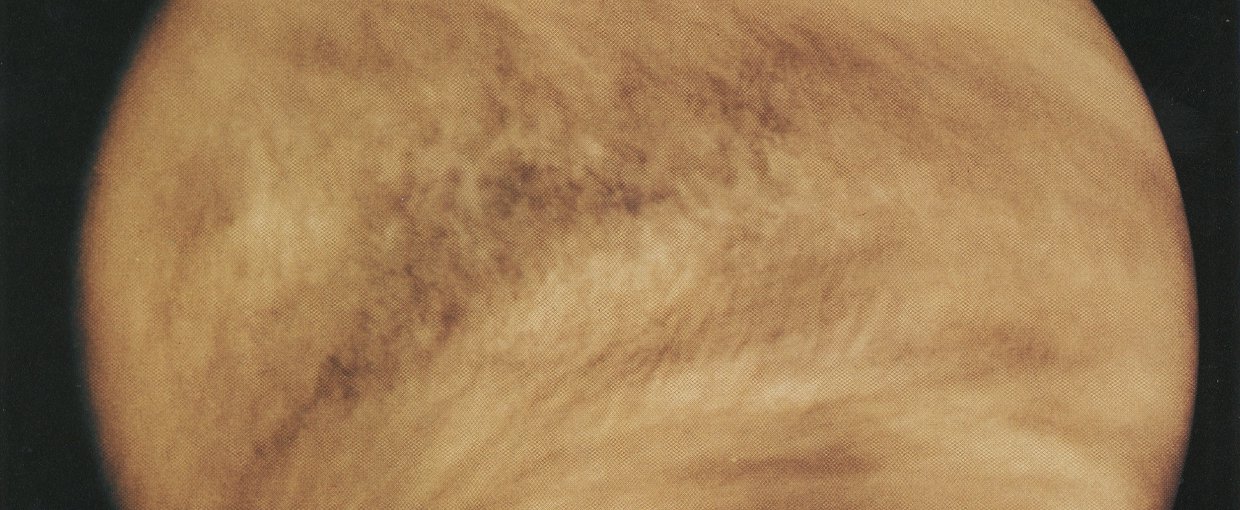
Aug. 3, 2018
Research Highlight
Linearized Flux Evolution in Planetary Climate Models

Pioneer Venus Orbiter ultraviolet observations of cloud structure in Venus' atmosphere. Credit: NASAImage credit: NASA.
Planetary climate models are used by astrobiologists to understand the habitability of planets, both in our solar system and beyond. These models can be very complicated, taking into account numerous factors that affect a planet’s climate. One aspect of climate models is the input of accurate radiative fluxes that can be quickly updated as changes in the atmosphere and at the surface occur.
Researchers have presented a new technique – dubbed Linearized Flux Evolution (LiFE) – to incorporate a full-physics radiative transfer model into planetary climate simulations. The study validates the use of the LiFE approach in a planetary climate model, then demonstrates its application with Mars, Earth, and Venus. A case study on Venus shows how thermal structures of the Venusian atmosphere and surface are reproduced.
The study, “Linearized Flux Evolution (LiFE): A technique for rapidly adapting fluxes from full-physics radiative transfer models,” was published in the Journal of Quantitative Spectroscopy and Radiative Transfer. The work was supported by the Nexus for Exoplanet System Science (NExSS). NExSS is a NASA research coordination network supported in part by the NASA Astrobiology Program. This program element is shared between NASA’s Planetary Science Division (PSD) and the Astrophysics Division.